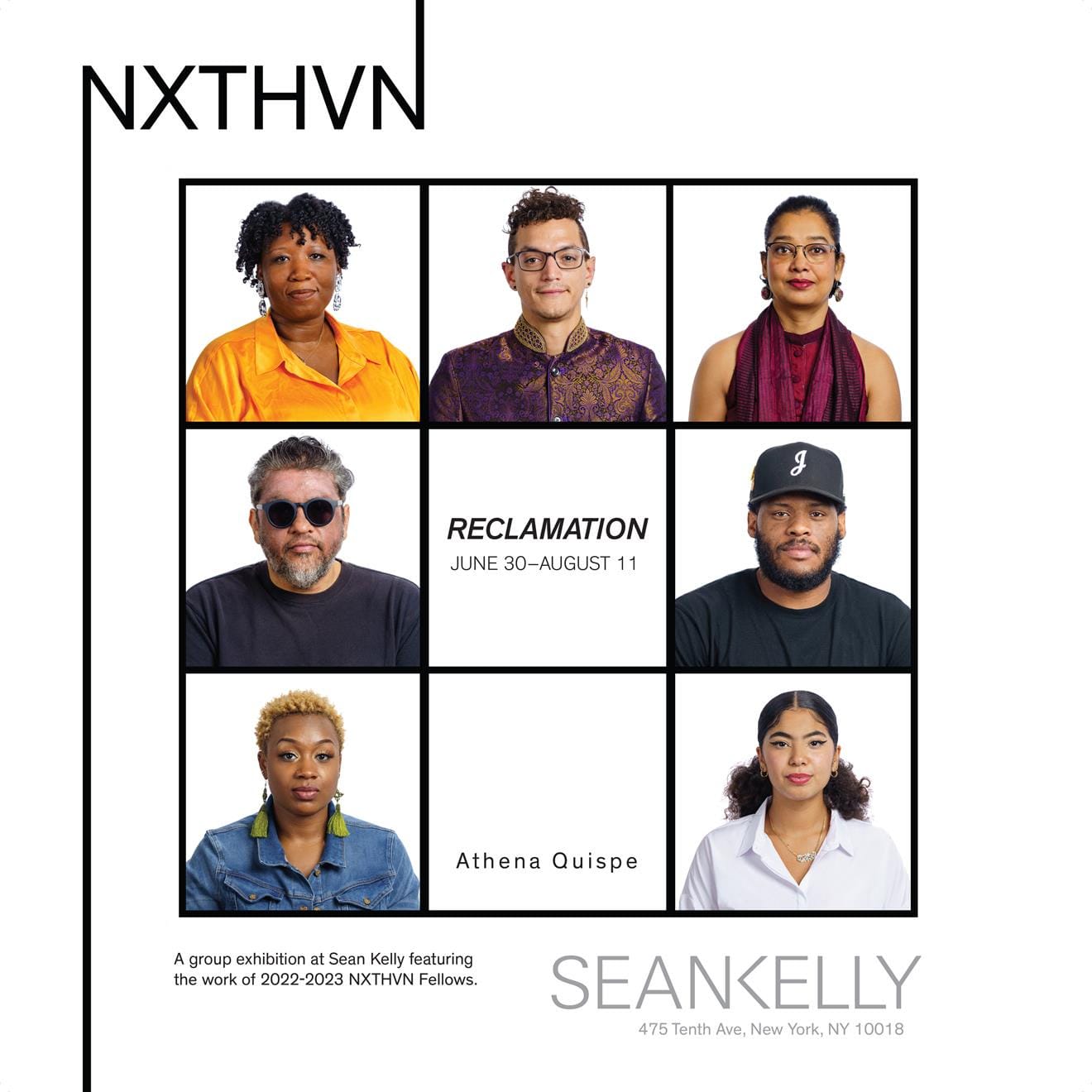Sean Kelly and NXTHVN are proud to present RECLAMATION, a group exhibition featuring works that embody the multiplicities of human experience through painting, drawing, collage, sculpture, installation, and performance. This culminating exhibition presents artists from NXTHVN’s Cohort 04 Fellowship Program; Anindita Dutta, Donald Guevara, Ashanté Kindle, Athena Quispe, Edgar Serrano, and Capt. James Stovall V, it is curated by Curatorial Fellows Cornelia Stokes and Kiara Cristina Ventura. These artists have created forms that contradict the viewer’s expectation of recognizable materials and icons, as a means to challenge the perceptible limits of our social conditioning and humanity. Throughout RECLAMATION, each artist interrogates and reclaims the power of Western consumption as it relates to notions of beauty, art history, religion, spirituality, and sexuality.
Edgar Serrano’s paintings critically confront the canon of traditional Western art and artistic portraiture by critiquing European art’s misappropriation of indigenous artistic and cultural traditions in Africa and Latin America. Serrano’s works deceive the eye with loose expressionistic brushstrokes and tightly woven embroidery-like patterns that call attention to the surface of the canvas. Through his methodical style and play with optical appearances, his paintings incite reactions of amusement, trickery, and wonder as they slowly reveal meaning.
Athena Quispe re-indigenizes the discourse of painting. Rooting her work in Peruvian pre-Hispanic painting and artistic production, Quispe creates sculptural paintings to honor her ancestral bloodline through blood memory and inherited knowledge. This act intrinsically deconstructs European interdictions of pre-columbian art and traditions.
Ashanté Kindle utilizes the textures, curl patterns, and styling of Black hair to envision new realities of personal existence that defy standards of conformity. Through her abstract paintings and video work, she challenges easily digestible ideas of Black femininity. By magnifying the hair strand on canvas, accentuated by stylish adornments, the cellular properties of the hair follicle begin to symbolize the infinite space of the cosmos.
Donald Guevara constructs vignettes of AFK (away from keyboard) glitch spaces, where images of cultural and religious icons, bodily forms, team sports, magazine ads, and trading cards are twisted, wrapped, layered, and superimposed into complex and, at times, contradictory composites. Guevara utilizes collage, drawing, and painting as visual methods of interrogation into the glitch to explore how dissonant matters can forge a cyborg amalgamation where culture, race, and gender openly coalesce together.
Capt. James Stovall V creates a relatable image of Christ and other biblical figures to comment on the relevancy of these idols’ appearance to the spiritual experience. By masking the figure, Stovall V intervenes in the correlation between whiteness and divinity, employing images that contradict the traditional physical appearance of these figures. His compositions also challenge convention as the tag-like drawing style and partially rendered figures refute religious iconographic historical paintings.
Anindita Dutta’s sculptural and performance practice centers around reclaiming silenced voices, untold stories, and concealed horrors. Through her new series, “Sex, Sexuality, and Society: Chapter Two,” she retrieves the memories of objects that remain silent witnesses to sexual trauma. Utilizing sensuous materials such as used clothes, boots, shoes, rawhide, horns, silk, and velvet, Dutta gives voice and power to these mutated materials.
The works included in RECLAMATION remind viewers to be critical of the things we covet as a means of unearthing the systems that prescribe our longing. These artists show us the potential to liberate desire and image from corrupted ideologies that inform our understanding of art, history, beauty, religion, and sexuality. The new forms they create demonstrate to the viewer the necessity for reclaiming power structures to break through into new realms of human experience beyond simple classifications.
